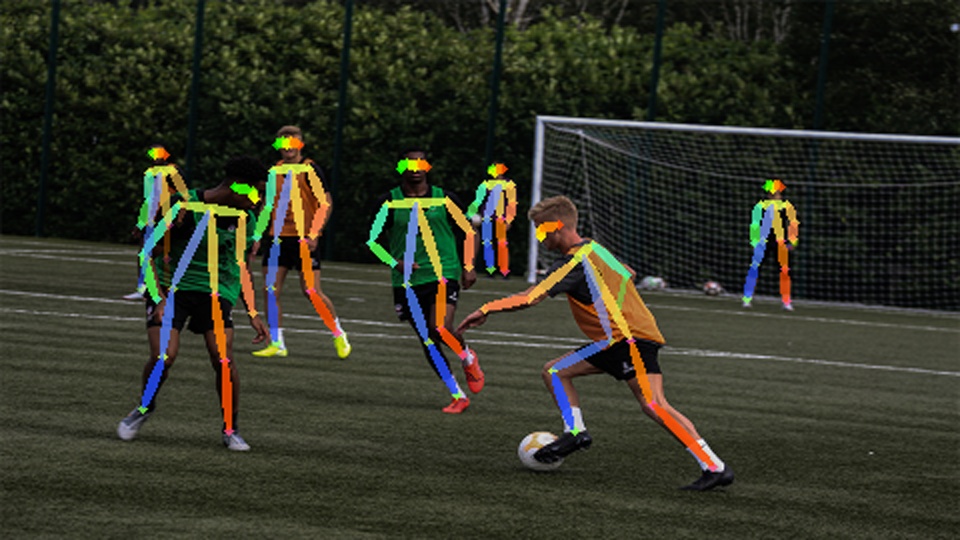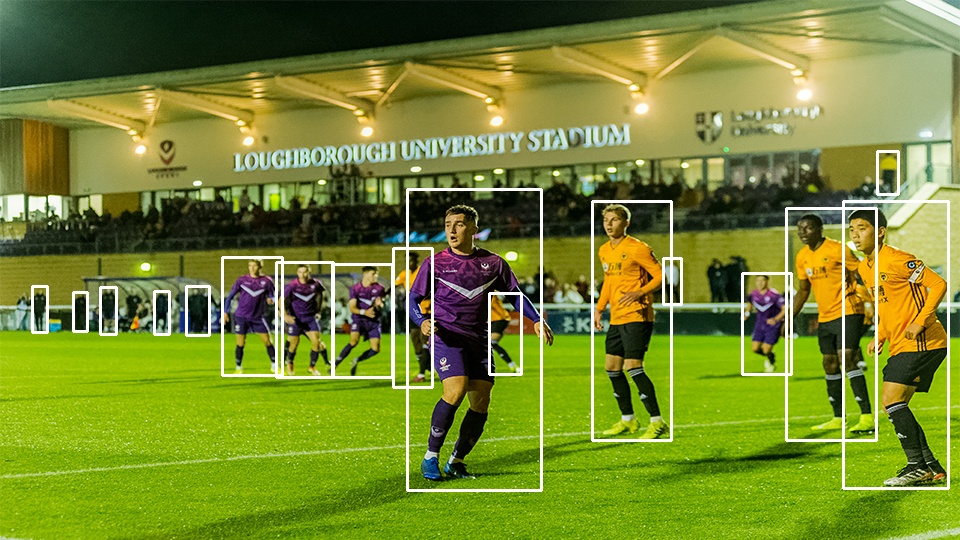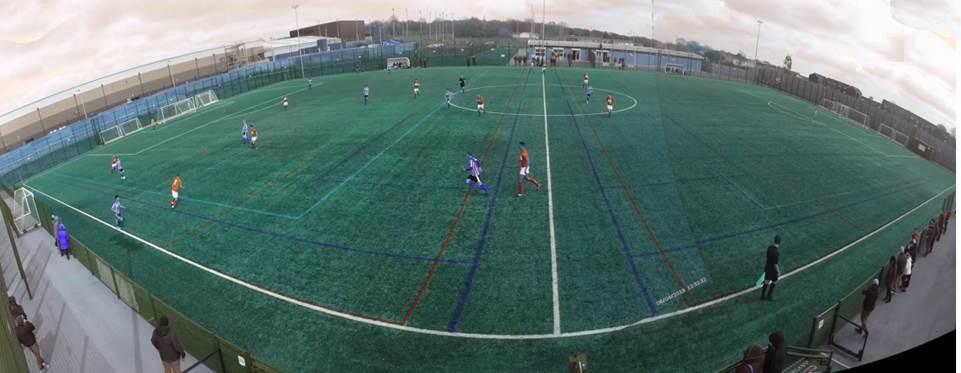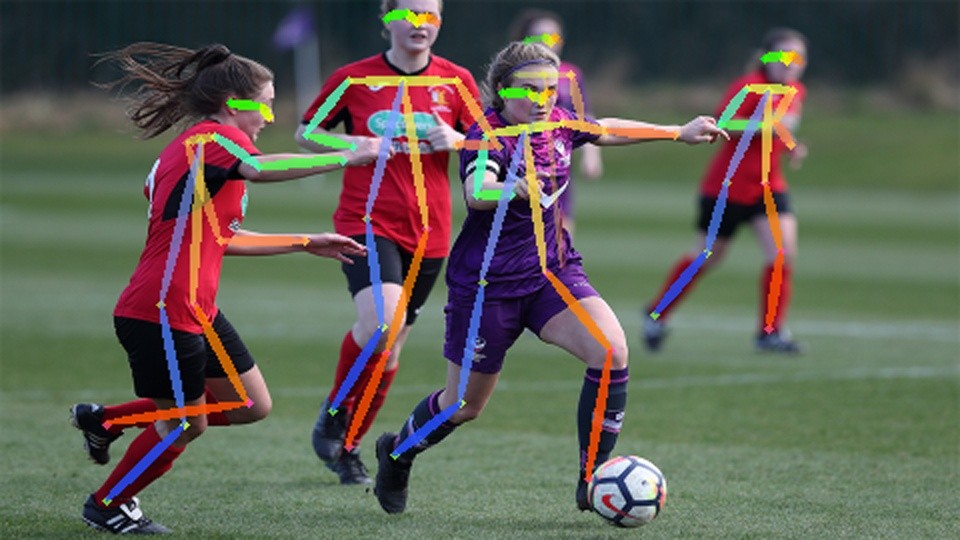Dr Baihua Li, the project lead, says the technology could lead to major changes in the sport as it will enable clubs to effectively identify and quickly recruit talented players.
Current player performance analysis is a labour-intensive process and involves someone watching video recordings of matches and manually logging individual player’s actions – this involves recording how many passes and shots were taken by a player, where the action took place, and whether it had a successful result.
Not only is this method incredibly time-consuming, it also presents issues of accuracy, consistency, and comparability as it relies on human judgment and a lack of bias.
Some automated technologies are on the market already, but they are only able to track players on the pitch – to determine distance covered and speed – but they cannot provide detailed information on the actions taken by players.
To tackle this problem, Dr Li and her team aimed to develop a hybrid system where human data entry can be accelerated and supplemented by camera-based automated methods to meet the high demand for low-cost timely performance data generated from large amounts of football videos.
Funded by Innovate UK and in collaboration Statmetrix (a company that specialises in football performance data insights), the researchers have used the latest advances in computer vision, deep learning, and AI to achieve three main outcomes. They are:
1. Detecting body pose and limbs to identify actions
 The image that has been analysed is courtesy of Ben Lumley Photography.
The image that has been analysed is courtesy of Ben Lumley Photography.
Based on current advances in AI and deep learning, Dr Li and the team have used an AI model to detect the body limbs and poses of players so their movements can be recognised and then analysed.
The technology processes video footage, detects individual players, and identifies if they are running, walking or jumping, and which foot they are passing the ball with.
 The image that has been analysed is courtesy of RO Photography.
The image that has been analysed is courtesy of RO Photography.
The researchers used deep learning (a novel state-of-the-art technology of machine learning) and computer vision to train the AI system to do this.
Deep learning involves getting a complex deep-layer neural network to learn hidden patterns and extract discriminative features from large amounts of data for perception.
In this case, the researchers used thousands of match recordings from all different football divisions - that show various teams, poses, jerseys, camera angles and background - to train the AI to detect players and poses thus to recognise their movements, i.e. running, walking, kicking with their left foot.
2. Tracking players to get individual performance data
In addition to looking at actions taken in a match, the Research Associate working on this project, Dr Shreedhar Rangappa, trained the deep neural network to track individual players and gather data on the individual’s performance throughout the match video.
 Example of how the tech tracks players. Photo by Mayank Kabadi.
Example of how the tech tracks players. Photo by Mayank Kabadi.
Player tracking will help to work out how a player’s position is relevant to others –information that is incredibly important when it comes to analysing team sports coordination.
3. Camera stitching
Limited camera coverage (field of view) and low resolution have also been an issue when it comes to analysing lower league or grassroots games, as often only low-cost affordable cameras are used to record a match.
This is problematic as it is hard to record the whole field of view and the players can run in or out of the image view, so it is hard to track them.
The researchers have come up with a solution to this; they propose using two low-cost consumable level normal cameras (such as GoPros), with each recording half of the football field, and a practical camera stitch method they have developed.
The technology uses corresponding feature points from both cameras to generate a whole field of view – allowing players to be tracked and analysed much more reliably.
Industry partner Statmetrix further developed this idea and implemented software for automated view stitching.
The technology is now at commercial trials and it is hoped a new product can be on the market and available for football clubs by the end of 2020.
 Example of how camera stitching gives a better view of the entire pitch. Photo by Mayank Kabadi.
Example of how camera stitching gives a better view of the entire pitch. Photo by Mayank Kabadi.
Dr Li says the innovations will help to improve access, at all tiers of football, to data needed for player performance analysis and talent identification, and there is the potential to use the technology to track players in other sports.
She commented: “Performance data and match analysis in football is an essential part of the sport and can have a huge impact on the player and team performance.
“The developed technology will allow a much greater objective interpretation of the game as it highlights the skills of players and team cooperation.
“This innovation will have a positive impact on the football industry and further advance sports technology while providing value to the players, coaches, and recruiters that use the data.”
The collaboration with Loughborough University and technology developed from the project have supported Statmetrix to win a prestigious MSDUK Innovation Challenge Award 2019.
Olukunle Kayode, CEO at Statmetrix, said: “The solutions we aim to commercialise are technically challenging ones, but the benefits of data availability across the lower tiers of sport will help unlock previously untapped talent.”
